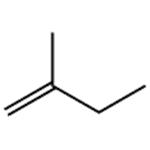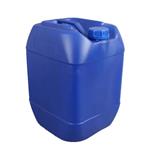Organic synthesis, pesticide formulations.
2-Methyl-1-butene is used as a solvent in organic synthesis. It is also used in the preparation of pinacolone, flavor enhancer, spice, crop protectants and tertiary amyl phenol. Further, it serves as a photosensitive material and concrete dispersant. In addition to this, it is used as a fuel and fuel additive.
ChEBI: An alkene that is but-1-ene carrying a methyl substituent at position 2.
A colorless volatile liquid with a disagreeable odor. Insoluble in water and less dense than water. Flash point below 0°F. Vapors are heavier than air. Used to make other chemicals.
Highly flammable. Insoluble in water.
The unsaturated aliphatic hydrocarbons, such as 2-METHYL-1-BUTENE, are generally much more reactive than the alkanes. Strong oxidizers may react vigorously with them. Reducing agents can react exothermically to release gaseous hydrogen. In the presence of various catalysts (such as acids) or initiators, compounds in this class can undergo very exothermic addition polymerization reactions.
Highly flammable, dangerous fire and
explosion risk.
Inhalation or contact with material may irritate or burn skin and eyes. Fire may produce irritating, corrosive and/or toxic gases. Vapors may cause dizziness or suffocation. Runoff from fire control or dilution water may cause pollution.
A simple asphyxiant.
Very dangerous fire hazard when exposed to
heat, flame, or oxidizers. To fight fire, use
dry chemical, CO2, foam. When heated to
decomposition it emits acrid smoke and
irritating fumes.



